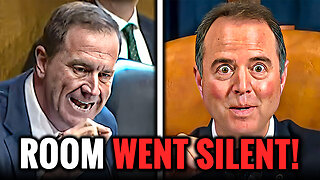Premium Only Content

Understanding Iran's Nuclear Threat and Its Impact on U.S. Foreign Policy
The current state of Iran’s nuclear program can be traced back, in part, to the policies and actions taken during the Obama and Biden administrations. Under President Obama, the United States pursued the Joint Comprehensive Plan of Action (JCPOA), commonly known as the Iran nuclear deal, aiming to limit Iran's nuclear capabilities in exchange for the lifting of economic sanctions. While the deal temporarily restrained uranium enrichment and provided a framework for monitoring Iran’s activities, critics argue that it failed to address other significant regional threats posed by Iran. The Trump administration's withdrawal from the JCPOA and subsequent "maximum pressure" campaign further altered the dynamics, pushing Iran to resume and expand its nuclear activities.
Now under President Biden, efforts to revisit the negotiating table have faced significant challenges, with growing skepticism about Iran's intentions and diminishing global unity on how to proceed. The question remains—what’s next? With rising tensions, evolving alliances in the Middle East, and the advancing technology of Iran's nuclear program, U.S. foreign policy must craft a nuanced approach, balancing deterrence and diplomacy to prevent further escalation. The decisions made in the coming years will shape not only the fate of the JCPOA but the broader regional and global security landscape.
-
 22:56
22:56
American Thought Leaders
1 day agoCharles Murray: I Thought Religion Was Irrelevant to Me. I Was Wrong.
13K4 -
 36:22
36:22
Brad Owen Poker
4 hours agoGIGANTIC $17,000+ Pot In BOBBY’S ROOM! TRAPPING Top Pro w/FULL HOUSE!! Big Win! Poker Vlog Ep 326
15.8K -
 3:53
3:53
NAG Daily
21 hours agoRUMBLE RUNDOWN: DREAM HACK SPECIAL W/Greenman Reports
10.5K6 -
 1:28
1:28
Damon Imani
1 day agoThey Laughed at Trump’s Cognitive Test — Damon Made Them REGRET It!
16.9K8 -
 9:14
9:14
Freedom Frontline
23 hours agoAdam Schiff PANICS As Eric Schmitt Exposes His Dirty Lies LIVE
11.3K8 -
 10:32
10:32
GBGunsRumble
1 day agoGBGuns Armory Ep 153 Adler Arms AD-9`
8.43K1 -
 35:53
35:53
Degenerate Plays
3 hours ago $0.09 earnedRuckus Randy And Repair Ronald (Socks On) - Call of Duty: Modern Warfare 2 (2009) : Part 7
5.28K1 -
 38:35
38:35
Stephen Gardner
1 day ago🔥What JUST leaked out of Congress. PROVES Trump RIGHT!!
97.7K132 -
 LIVE
LIVE
Total Horse Channel
15 hours ago2025 IRCHA Derby & Horse Show - November 2nd
57 watching -
 1:59:42
1:59:42
Game On!
22 hours ago $44.98 earnedNFL Week 9 Wise Guy Roundtable BEST BETS!
146K15